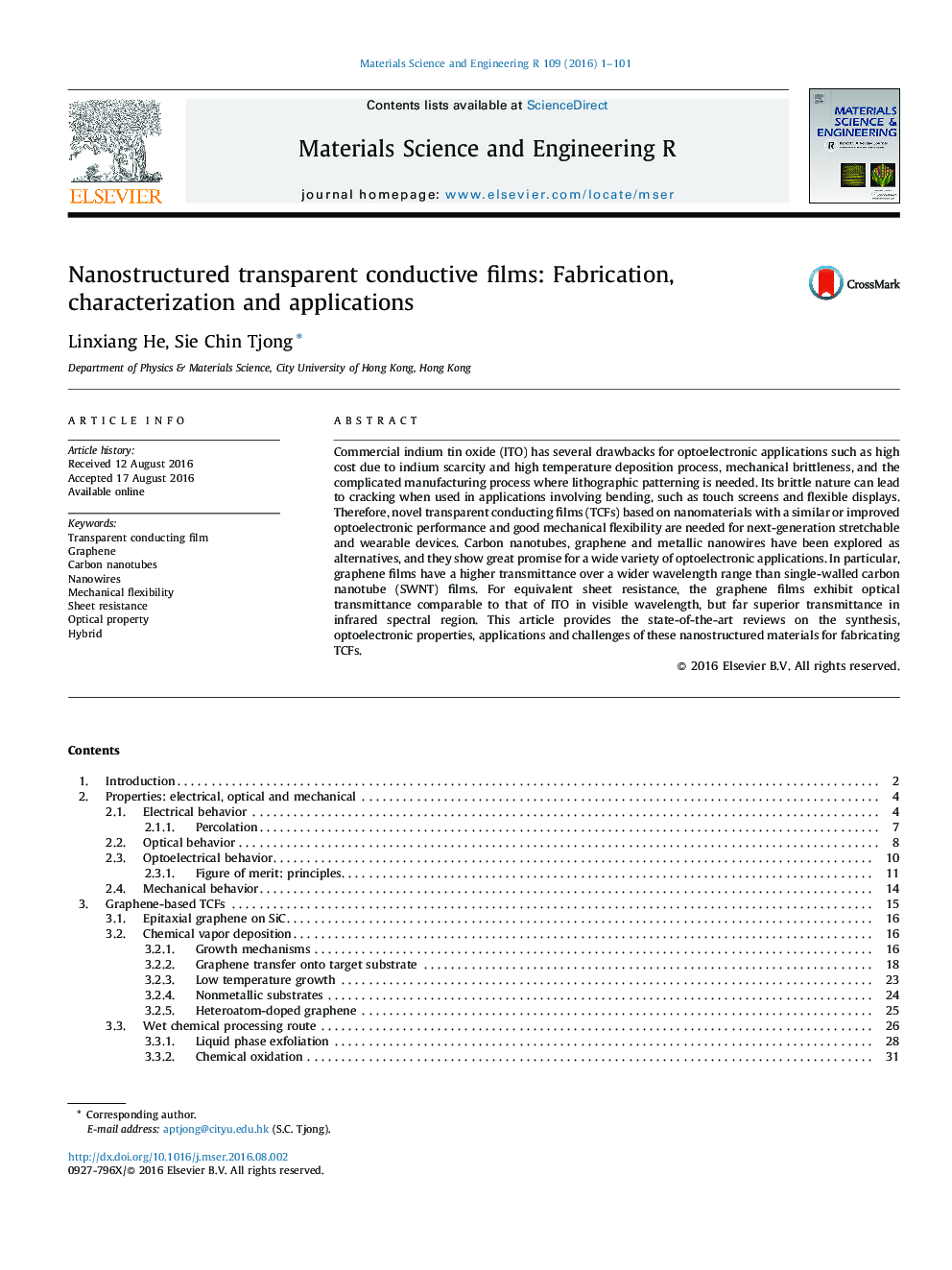| Article ID | Journal | Published Year | Pages | File Type |
|---|---|---|---|---|
| 5448921 | Materials Science and Engineering: R: Reports | 2016 | 101 Pages |
Abstract
Commercial indium tin oxide (ITO) has several drawbacks for optoelectronic applications such as high cost due to indium scarcity and high temperature deposition process, mechanical brittleness, and the complicated manufacturing process where lithographic patterning is needed. Its brittle nature can lead to cracking when used in applications involving bending, such as touch screens and flexible displays. Therefore, novel transparent conducting films (TCFs) based on nanomaterials with a similar or improved optoelectronic performance and good mechanical flexibility are needed for next-generation stretchable and wearable devices. Carbon nanotubes, graphene and metallic nanowires have been explored as alternatives, and they show great promise for a wide variety of optoelectronic applications. In particular, graphene films have a higher transmittance over a wider wavelength range than single-walled carbon nanotube (SWNT) films. For equivalent sheet resistance, the graphene films exhibit optical transmittance comparable to that of ITO in visible wavelength, but far superior transmittance in infrared spectral region. This article provides the state-of-the-art reviews on the synthesis, optoelectronic properties, applications and challenges of these nanostructured materials for fabricating TCFs.
Keywords
Related Topics
Physical Sciences and Engineering
Materials Science
Electronic, Optical and Magnetic Materials
Authors
Linxiang He, Sie Chin Tjong,
